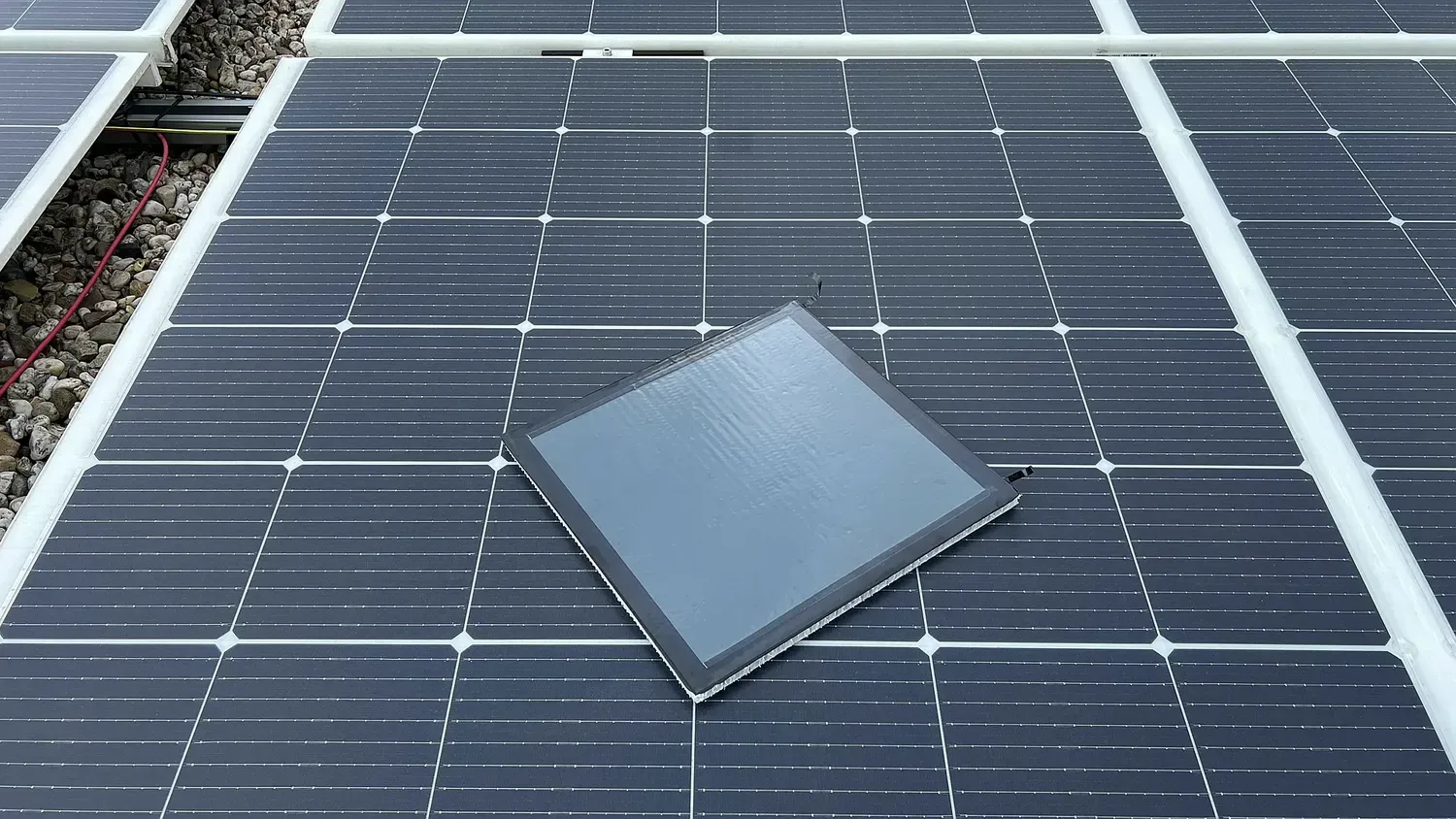
© Solarge
Solarge and TNO have developed a prototype perovskite solar panel in a unique polymer construction. This Dutch world first combines 2 innovative technologies.
The world first paves the way for more sustainable solar panels with extremely low CO2 emissions that can be produced locally.
Revolutionary concept
The new 32-by-34-centimeter prototype represents a technological breakthrough. The light-absorbing layer in the solar panel comes partly from the roll-to-roll production process for perovskites, a technique in which TNO holds a strong position worldwide. In this process, solar cells are produced on a conveyor belt, as it were, similar to the printing of a newspaper.
Solarge is contributing its unique knowledge for "packaging" the solar cells in a plastic construction. The company has a factory in Weert, Limburg, to produce these plastic solar panels. These can be mounted like conventional glass-based solar panels, but are about half as light. As a result, they can be used on virtually any roof, including where standard solar panels would be too heavy.
Minimal environmental impact
The perovskite thin film is expected to have a very low carbon footprint. Although the technology is still under development and hard figures are still lacking, researchers estimate that CO2 emissions are less than 10 grams per kilowatt-hour - a fraction of conventional solar panels.
The further construction of the solar panel consists of several layers of polymers: a so-called organosandwich backsheet, encapsulants and a frontsheet that guarantee a long service life. These materials were developed specifically for use in solar panels and, according to Solarge, can even be manufactured in the future from recycled or biobased plastics from SABIC.
International position
With the combination of these 2 innovative technologies, a position in the world top is becoming possible. The prototype responds to the move from traditional silicon solar cell technology to the potentially cheaper high-efficiency perovskite technology.
TNO sees many parties worldwide betting on perovskite solar cell technology, often built on glass. TNO opts for roll-to-roll technology with flexible films and the application of special functional layers with techniques such as spatial atomic layer deposition (SALD). TNO is making use of the knowledge and experience in the Dutch ecosystem. 'Applications of the final product lie both in lightweight and customized flexible foils that generate solar power and in lightweight and circular solar panel technology with polymers as Solarge does,' says Sjoerd Veenstra, researcher at TNO. 'With that, we can start producing rigid solar panels that can be mounted in the same way as glass solar panels, i.e. without gluing the foils to roofs or facades.'
Market potential
Solarge expects perovskite solar cell technology to come to the market faster than previously predicted. The company points to international developments. "We see that not only China is investing in perovskite, but also recent announcements from Japan to invest as much as $2 billion in roll-to-roll perovskite technology," said Gerard de Leede, chief technology officer of Solarge. This includes a large consortium that includes Sekisui, which recently signed a letter-of-intent with BOM and TNO.
Solarge and TNO are working on plans to develop perovskite technology into a mature product and bring it to market as soon as possible. This collaboration is currently taking shape with the support of funds and investment opportunities from the Growth Fund project SolarNL and can count on concrete interest from investors.
The prototype shows that the technology is fundamentally suitable for making the step to multilayer perovskite solar cells. De Leede concludes, "This will make the Netherlands leading the world in terms of sustainability, and in time price breakthroughs are also possible. Moreover, there will be a breakthrough on the geopolitical front, because there will be much less dependence on the silicon supply chain, which is mainly located in China.'
Source: Solar Magazine
.